What I read in 2017
Whenever I’m looking for a new book to read, I really enjoy looking at lists of books other people read. Since I started reading more again this year, I thought it’d be a good idea to write down some thoughts on the individual books. I ended up picking up a new book pretty much every month. In the following, I describe the more interesting ones of them.
The Sense of Style
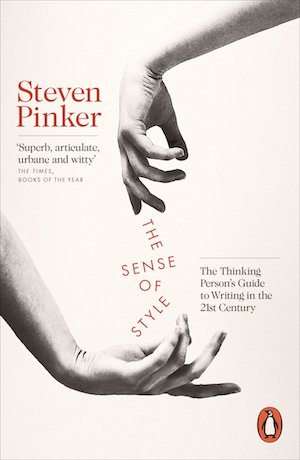
The Sense of Style is a style guide that tries to explain how to write more elegantly and effectively. I started reading this book at the very beginning of January, when I was in the final weeks of working on my bachelor thesis. Of course, the timing was not a coincidence, and I do feel like the book has helped to improve my thesis a bit.
To my surprise however, I also ended up finding the book itself quite enjoyable to read. Partly, this is definitely because it is written in a great style, by a highly eloquent author. While I was reading the book, it also occurred to me that I never really thought about the fact that there are style guides for writing prose, similar to how programmers have style guides for code.
The book addresses not only stylistic choices but also dives into more psychological aspects. One of these points that I really internalized is what the author calls the curse of knowledge. By having a deep understanding of a topic, it becomes incredibly hard to explain it in a good way to people without much prior knowledge. This is due to the fact that we forget the difficulties we had when first learning about the topic ourselves. Now it all seems so simple and it’s easy to fall into the trap of thinking that certain parts are also obvious to other people.
The Signal and the Noise
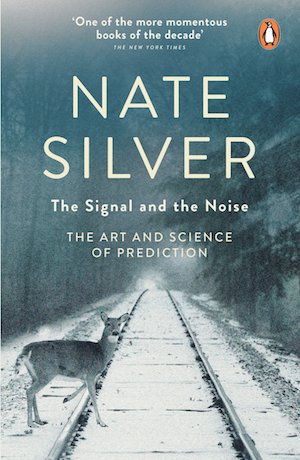
A lot of people will probably know the author, Nate Silver, for his incredibly accurate election predictions. He is also well known for applying statistical techniques to baseball, and for his articles at FiveThirtyEight, where he combines statistics with journalism. I have to admit that this impressive biography is also what got me interested in his book initially. While this is not the best reason to read a book, I have to say that I really enjoyed it. Over the last year, I ended up recommending the book to a lot of people.
In each chapter, Silver explains how statistics are used to make predictions in different fields. The range of these applications is quite large and goes from elections over weather reports and climate change to online poker. Because there is such a large variety of topics, the book never gets boring. It’s also interesting to see how complicated things like weather predictions are, while they are so ordinary for us that we don’t give them much thought.
When I started reading the book, my expectations were a bit off, as I expected a lot more math. Instead, the book is more concerned with explaining the fundamental ideas on a popular scientific level. This means that the book contains nearly no math but often gets into psychological aspects. For example, a good part of the chapter on weather predictions is spent on explaining why some predictions are made more inaccurate for psychological reasons. This is not necessarily a negative criticism of the book, as I also deeply enjoyed these topics. Lastly, I want to mention that the book also contains a really good high-level introduction to Bayesian statistics.
Reinforcement Learning: An Introduction
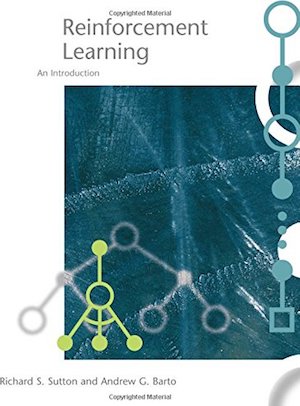
Reinforcement learning is a subarea of Machine Learning with some essential differences to (un)supervised learning. The fundamental idea is that we want to train an agent that learns how to perform tasks in a dynamic environment. In contrast to supervised learning, the feedback given to the agent is delayed and does not tell it what the best action would have been.
Because reinforcement learning is a bit of a niche area in Machine Learning, I never really got into it when I was new to the field. Still, the fundamental idea sounded incredibly interesting to me, so in the holidays after the winter semester I decided to work through this book. This was just in time to read the reworked second edition.
The book was written by Sutton and Barto who are renowned experts in the field and came up with many of the most important ideas themselves. While the book does contain a large amount of math, it’s still very accessible because everything is explained up from the ground up.
Working through the book was a lot of fun and I ended up implementing many algorithms from the book using Jupyter notebooks. By now, reinforcement learning is also one of my absolute favorite areas of machine learning, and the book definitely contributed to this. I still marvel at the way it builds up the entire framework step by step.
The Seven Habits of Highly Effective People
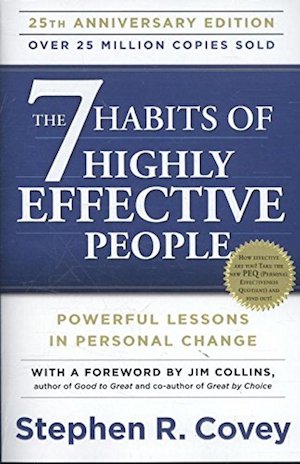
This book tries to explain what traits most successful people have in common. The fundamental idea behind the book is that there are seven such habits that most of these people share. One chapter is devoted to each habit, in which it is discussed in a lot of detail.
On the first few pages of the book, there is an incredible number of quotes from well-known people that praise the book. This increased my expectations even further, but ultimately I really did not like the book. The habits themselves all make sense but they are discussed in a huge length, which becomes off-putting at some point. Other advice from the book is way too over-engineered and complicated. I feel like it would’ve made more sense to write down these ideas in a long essay rather than in a 400-page book.
A Clash of Kings
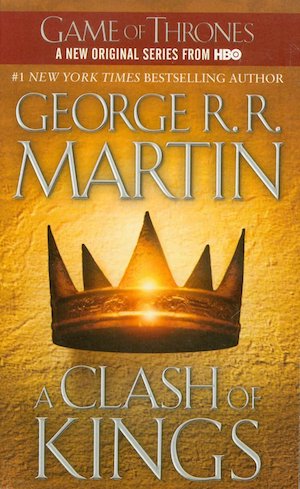
A Clash of Kings is the second book from the A Song of Ice and Fire series that Game of Thrones is based on. After I read the first book in 2016, I was planning to read the other four books this year just so that I would be done when the sixth book was going to come out. Unfortunately, that book got delayed further and further and is not even out by now, so I decided to pause again after the second book.
All in all, I really enjoyed the book. Knowing the important plot points from the TV series takes some fun away, but the second book already starts to deviate from the show, so there were still some surprises left. The writing style is also great and I really like how each chapter is told from the point of view of a different character.
A Mathematician’s Apology

Hardy was one of the most brilliant mathematicians of the 20th century. A Mathematician’s Apology is an essay from him where he tries to reason about why it is worth spending time on mathematics. The word apology refers to a justification here.
At the core, it is Hardy’s belief that the most beautiful kind of math is not pursued for the sake of possible applications but just for the mathematics themselves. Interestingly, he argues that number theory, his field of work, is such an example. By now, there are of course many important applications for number theory. Hardy compares pure mathematics to fields like poetry that are just pursued because there is an aesthetic in them.
All in all, I found the essay very interesting to read. Hearing about his point of view made me change my perspective on certain areas of mathematics a little bit. However, I do not agree on all his points, some of his views just seem too excessive.
How To Win Friends And Influence People

How To Win Friends And Influence People is one of the best-selling books of all time and can be found on many book suggestion lists. Because I heard so much about it, I intended to read this book for quite some time. In the book, Carnegie describes fundamental social principles.
Many of these rules are fairly obvious. However, some of them are definitely worth reading about. For example, I found the parts about criticism and how people deal with it interesting to read about from a psychological perspective.
OpenIntro Statistics
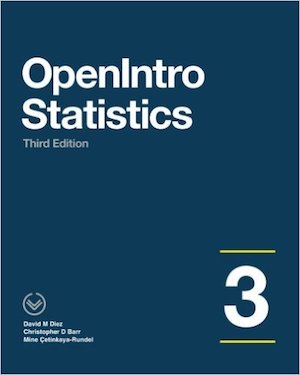
After having focused my studies on Machine Learning, I felt like I learned a lot about certain areas of statistics while not touching others at all. At some point, I decided that I should spend a little bit of time learning the fundamentals of statistics to be able to get a good overview of the entire field. Especially significance tests were a part of statistics where I felt like I really lacked knowledge.
OpenIntro Statistics is a freely available textbook that seemed suitable for this. It makes nearly no assumptions about the prior knowledge of the reader. On the one hand, this is great. You can pick up the book without revising any other topics beforehand. But it also means that some parts of the book are incredibly basic.
This is the first book where I actively started writing notes that summarize the most important points and concepts. This turned out to be incredibly effective, and I still can’t believe I never did this in an organized fashion before.
Looking back, I really like that the books cover a large number of different genres. I also only just noticed that I only read books in English this year. I’m pretty sure it was the same for 2016, which means I haven’t read a book in German for at least two years.